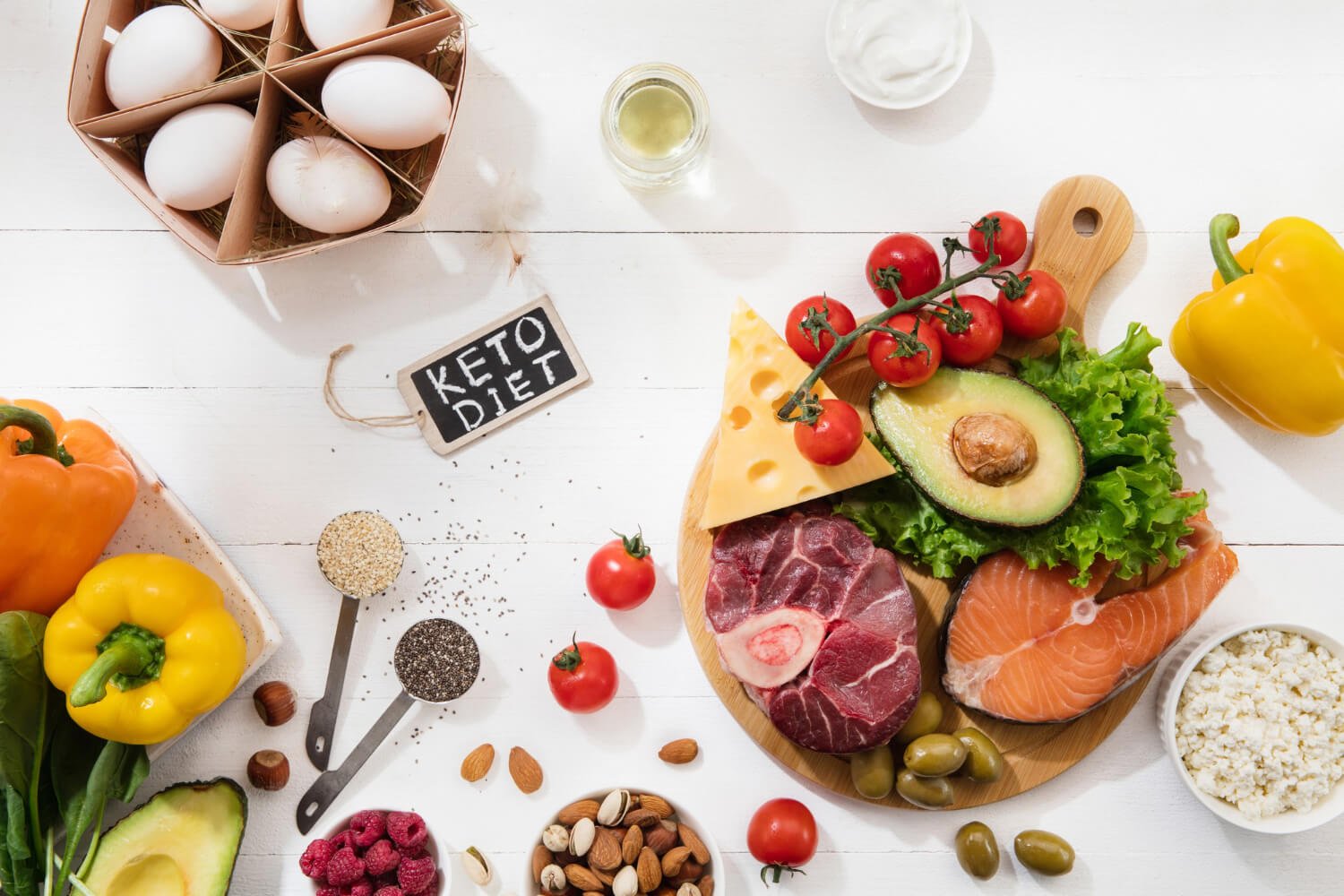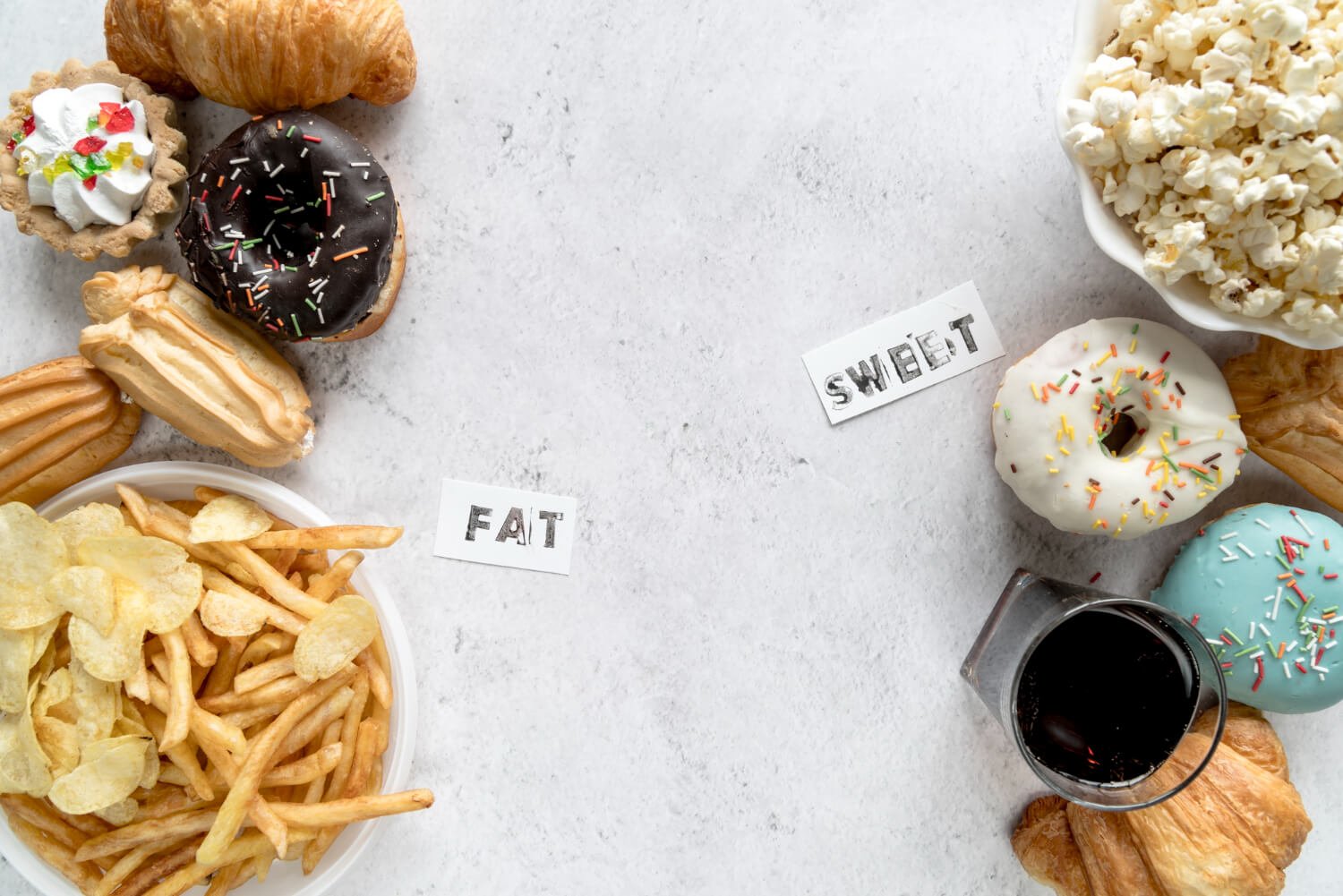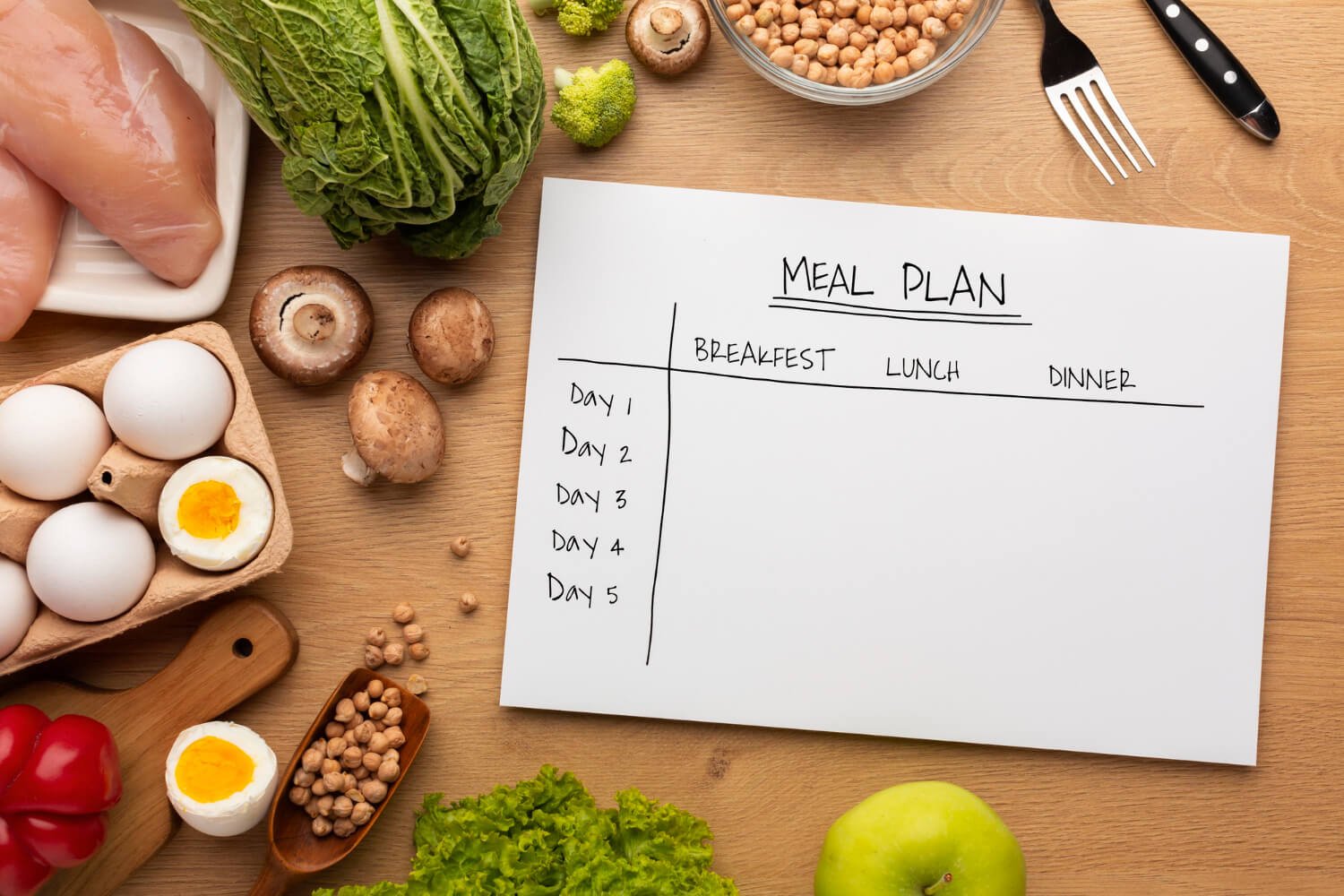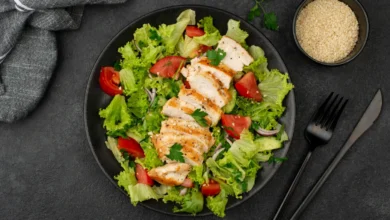The Keto Diet 101: How to Lose Weight and Improve Your Health

Welcome to our comprehensive guide on the Keto Diet for beginners! If you’ve been searching for an effective way to lose weight and improve your health, you’ve come to the right place.
In this article, we’ll walk you through everything you need to know about the Keto Diet, breaking it down into simple and easy-to-understand terms.
So, what exactly is the Keto Diet? Well, it’s a low-carb, high-fat eating plan that has gained immense popularity in recent years. But don’t worry, you won’t be deprived of delicious foods.
The Keto Diet focuses on replacing carbs with healthy fats, forcing your body to enter a state called ketosis. This metabolic state prompts your body to burn fat for energy instead of relying on glucose from carbs.
The benefits of the Keto Diet go far beyond just weight loss. Many people who follow this diet report increased energy levels, improved mental clarity, reduced inflammation, and even better blood sugar control. It’s no wonder why so many individuals are eager to give it a try!
Before diving into the nitty-gritty details, it’s important to understand the science behind the Keto Diet.
Understanding the Science Behind the Keto Diet
If you’re curious about how the Keto Diet works and what happens in your body when you follow it, let’s break it down for you.
We’ll keep things simple and steer clear of any complicated scientific terms. After all, understanding the science behind the diet is crucial for your success.
The main idea behind the Keto Diet is to drastically reduce your carbohydrate intake and replace it with healthy fats. When you consume fewer carbs, your body enters a metabolic state known as ketosis.
During ketosis, your liver begins to produce molecules called ketones from fat stores, which become the primary source of fuel for your body and brain.
Why does this matter? Well, by shifting from carbohydrates to ketones as your main energy source, you essentially become a fat-burning machine.
This shift in metabolism can lead to significant weight loss and other health benefits. Plus, it may even improve your mental clarity and focus, thanks to the steady supply of ketones to your brain.
Now that we’ve covered the science, let’s move on to the practical aspects of getting started with the Keto Diet.
Getting Started with the Keto Diet
Before you dive headfirst into the Keto Diet, it’s important to set yourself up for success. Here are a few key steps to help you get started on the right track:
Setting Your Goals
Begin by setting clear and realistic goals. What do you hope to achieve by following the Keto Diet? Is your main focus on weight loss, improved energy levels, or better overall health? Identifying your goals will help you stay motivated and measure your progress along the way.
Consultation with a Healthcare Professional
While the Keto Diet can be beneficial for many individuals, it’s always a good idea to consult with a healthcare professional before making any significant changes to your diet.
They can assess your unique health situation and provide personalized guidance.
This step is especially important if you have any underlying medical conditions or if you’re taking medications that may be affected by the diet.
Remember, it’s crucial to prioritize your health and well-being throughout your Keto Diet journey.
Now that you have your goals in mind and have consulted with a healthcare professional, you’re ready to embark on your ketogenic adventure.
Essential Foods for a Successful Keto Diet

When following the Keto Diet, it’s important to focus on incorporating the right foods into your meals. Here are some essential food categories that will help you thrive on your ketogenic journey:
Low-Carb Vegetables
Fill your plate with nutrient-rich, low-carb vegetables that provide essential vitamins, minerals, and fiber.
Examples include leafy greens like spinach, kale, and lettuce, as well as cruciferous vegetables such as broccoli, cauliflower, and Brussels sprouts.
These veggies not only add variety to your meals but also keep you feeling satisfied and support your overall health.
Healthy Fats and Oils
Healthy fats are the backbone of the Keto Diet. Incorporate sources of healthy fats and oils into your meals to provide the energy your body needs.
Avocado, olive oil, coconut oil, butter, and ghee are excellent choices. These fats not only add flavor to your dishes but also help you feel satiated and satisfied.
High-Quality Proteins
Include high-quality proteins in your diet to support muscle growth and repair. Opt for grass-fed beef, organic poultry, fatty fish like salmon and sardines, and eggs.
These protein sources are not only delicious but also provide essential amino acids and healthy fats.
Now that we know what to include in our meals, let’s explore the foods that are best to avoid on the Keto Diet.
Foods to Avoid on the Keto Diet

To achieve and maintain a state of ketosis, it’s important to steer clear of certain foods that are high in carbohydrates. Here are some examples of foods to avoid on the Keto Diet:
High-Carb Foods
Say goodbye to foods that are high in carbohydrates, including grains, bread, pasta, rice, and starchy vegetables like potatoes and corn.
These foods can quickly derail your ketosis efforts, as they cause a spike in blood sugar levels.
Sugary and Processed Foods
Avoid sugary foods and beverages like soda, candy, desserts, and sweetened cereals. Also, stay away from processed snacks and packaged foods that often contain hidden sugars and unhealthy additives.
Hidden Carbohydrates
Be mindful of hidden carbohydrates in certain foods. This includes sauces, dressings, and condiments that may contain added sugars or high-carb ingredients.
Always check labels and opt for homemade or low-carb alternatives whenever possible.
By avoiding these high-carb and sugary foods, you’ll set yourself up for success on the Keto Diet.
Meal Planning and Preparation

Meal planning and preparation are essential for successfully following the Keto Diet.
By taking the time to plan and prepare your meals in advance, you’ll set yourself up for success and make sticking to the diet much easier. Here are some practical tips to help you with meal planning:
Designing Your Keto Meal Plan
Start by creating a weekly meal plan that includes a variety of low-carb, high-fat meals.
Focus on incorporating the essential foods we mentioned earlier, such as low-carb vegetables, healthy fats and oils, and high-quality proteins.
Look for keto-friendly recipes online or in cookbooks to keep your meals exciting and delicious.
Grocery Shopping Tips
Make a detailed grocery list based on your meal plan before heading to the store. Stick to the outer aisles of the grocery store, where you’ll find fresh produce, meats, and dairy products.
Avoid the temptation of the inner aisles that often contain processed and high-carb foods. Shopping with a list will help you stay focused and avoid impulse purchases.
Meal Prep Ideas
Consider meal prepping to save time and ensure you always have healthy keto meals on hand. Set aside a few hours each week to batch cook and portion out meals for the upcoming days.
You can cook proteins, roast vegetables, and even prepare grab-and-go snacks. Store your prepped meals in convenient containers to make it easy to grab a nutritious keto meal whenever you need it.
Tracking Your Progress

Tracking your progress is an essential part of your Keto Diet journey. It helps you stay accountable and allows you to identify what’s working and what might need adjustment. Here are some ways to track your progress:
Importance of Tracking
Keep a food diary or use a mobile app to log your daily food intake. This will help you keep track of your macronutrient intake and ensure you’re staying within your desired keto ratios.
It’s also beneficial to track your weight, measurements, and how you feel throughout your journey.
Useful Tools and Apps for Tracking
There are several tools and apps available that can make tracking your progress easier.
These apps allow you to input your meals and track your macros, making it convenient to monitor your daily intake. Some popular options include MyFitnessPal, Carb Manager, and Cronometer.
By diligently tracking your progress, you’ll have a better understanding of how your body responds to the Keto Diet and can make any necessary adjustments along the way.
Overcoming Challenges on the Keto Diet
The Keto Diet can come with its fair share of challenges, but with the right strategies, you can overcome them and stay on track. Here are a few common challenges and tips to help you navigate them:
Keto Flu: What it is and How to Manage it
During the initial stages of the Keto Diet, some people may experience what’s commonly known as the “keto flu.”
It’s a temporary collection of symptoms that can include fatigue, headaches, irritability, and brain fog.
To manage the keto flu, make sure you stay hydrated, replenish your electrolytes, and give your body time to adjust.
Consider adding foods rich in potassium and magnesium to your diet or using supplements if needed.
Social Situations and Dining Out
Social situations and dining out can pose challenges when you’re following a specific diet. However, with a little planning and flexibility, you can still enjoy social gatherings while staying true to your keto lifestyle.
Look for keto-friendly options on menus, ask for modifications, and communicate your dietary needs to your friends and family. If you’re attending a potluck or a party, consider bringing a keto-friendly dish that you can enjoy along with everyone else.
Staying Consistent and Maintaining Long-Term Success
Consistency is key to achieving long-term success on the Keto Diet. Here are some strategies to help you stay consistent and make the diet a sustainable part of your lifestyle:
Developing Healthy Habits
Focus on developing healthy habits that support your keto journey. Make meal planning and preparation a regular part of your routine.
Prioritize whole, unprocessed foods and avoid temptations that may derail your progress. Find enjoyable physical activities that you can incorporate into your daily life to support your overall well-being.
Managing Plateaus
Plateaus are common on any weight loss journey, including the Keto Diet. If you find that your weight loss stalls, don’t get discouraged. Take a closer look at your food choices and portion sizes.
Consider adjusting your macronutrient ratios or increasing your physical activity level. Remember, progress may not always be linear, and the scale is just one way to measure success.
Pay attention to other positive changes in your body and how you feel overall.
Combining the Keto Diet with Exercise
While the Keto Diet can lead to weight loss on its own, incorporating regular exercise into your routine can further enhance your results and overall health.
Engage in activities you enjoy, whether it’s strength training, cardio, yoga, or a combination. Exercise not only helps with weight management but also boosts your mood, increases energy levels, and supports overall well-being.
By overcoming challenges and staying consistent, you can maintain long-term success on the Keto Diet and enjoy the numerous benefits it has to offer.
Potential Risks and Precautions
While the Keto Diet can be a beneficial and effective way to improve your health and lose weight, it’s important to be aware of potential risks and take necessary precautions. Here are some considerations to keep in mind:
Keto Diet and Nutrient Deficiencies
When following a strict Keto Diet, there is a risk of certain nutrient deficiencies if not properly managed. Since the diet restricts many food groups, it’s important to ensure you’re still getting a wide range of essential nutrients.
Focus on incorporating a variety of low-carb vegetables, healthy fats, and high-quality proteins to help meet your nutritional needs. If you have concerns about specific nutrient deficiencies, it’s advisable to consult with a healthcare professional or registered dietitian.
Consulting a Healthcare Professional
Before starting the Keto Diet, it’s always a good idea to consult with a healthcare professional, especially if you have any underlying medical conditions or take medications.
They can provide personalized guidance and help determine if the diet is suitable for you. This is particularly important for individuals with conditions such as diabetes, kidney disease, or a history of gallbladder issues.
- Read Also: The DASH Diet 101: A Step-by-Step Guide to Heart Health
- Read Also: The MIND Diet 101: The Best Diet for Your Brain
- Read Also: The Paleo Diet 101: The Science Behind the Benefits
- Read Also: The Vegan Diet 101: Everything You Need to Know to Get Started
- Read Also: The Mediterranean Diet 101: A Healthy and Sustainable Way to Eat
Conclusion
Congratulations on completing our comprehensive guide on the Keto Diet for beginners! We’ve covered a lot of ground, from understanding the science behind the diet to practical tips for getting started and overcoming challenges along the way.
Now, armed with knowledge and strategies, you’re well-prepared to embark on your keto journey with confidence.
The Keto Diet offers numerous benefits, including weight loss, increased energy levels, and improved overall health.
By focusing on low-carb vegetables, healthy fats, and high-quality proteins, you can create delicious and satisfying meals that align with the principles of the diet.
Remember to consult with a healthcare professional to ensure the Keto Diet is suitable for you, especially if you have any underlying medical conditions or take medications. They can provide personalized guidance based on your specific needs.
Throughout your keto journey, consistency is key. Develop healthy habits, track your progress, and stay dedicated to your goals.
Embrace the challenges that may arise, such as the keto flu or social situations, and find strategies to overcome them. And always remember that your overall well-being matters above all else.
Keep in mind that the Keto Diet may not be a one-size-fits-all approach. It’s essential to listen to your body, make adjustments as needed, and find what works best for you.
If you ever feel overwhelmed or uncertain, don’t hesitate to reach out for support from online communities or seek guidance from professionals.
Now, take the knowledge you’ve gained, make a plan, and get started on your Keto Diet journey. Remember, progress takes time, so be patient and celebrate every step towards your goals.
With dedication and perseverance, you can achieve the weight loss and improved health you desire.
We wish you all the success in your Keto Diet endeavors. Cheers to a healthier and happier you!
FAQs
How can I maximize my weight loss on the keto diet?
To maximize weight loss on the keto diet, focus on maintaining a calorie deficit, consuming a variety of low-carb vegetables, incorporating healthy fats, and ensuring you’re in a state of ketosis by strictly limiting carbohydrate intake.
What foods can you eat unlimited on keto?
While it’s important to practice portion control, there are certain foods you can enjoy in larger quantities on the keto diet. These include low-carb vegetables like leafy greens, broccoli, cauliflower, and zucchini, as well as high-quality fats such as avocados, olive oil, and coconut oil.
What is the secret to the keto diet?
The secret to the keto diet lies in drastically reducing your carbohydrate intake and replacing it with healthy fats. By doing so, your body enters a state of ketosis, where it burns fat for energy. Consistency, meal planning, and focusing on nutrient-dense foods are key factors for success.
Can keto help with belly fat?
Yes, the keto diet can help with reducing belly fat. By reducing carb intake, the body’s insulin levels decrease, which promotes fat burning, including the visceral fat stored around the abdomen. However, it’s important to combine the diet with exercise and overall healthy habits for optimal results.
How much water should I drink on keto?
It is generally recommended to drink plenty of water on the keto diet, aiming for at least 8 cups (64 ounces) per day. Staying hydrated helps support overall health, aids in digestion, and can assist with reducing keto flu symptoms. Adjust your water intake based on individual needs, activity level, and climate.




